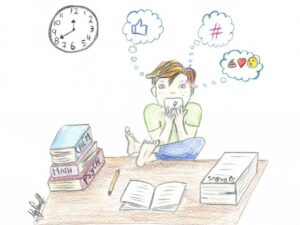Principles For Becoming a Good Listener as a Teacher or Facilitator.

Principles For Becoming a Good Listener as a Teacher or Facilitator.
Teachers become significant persons in many of their students’ lives.
If you were to list the ten most significant persons in your life, chances are at least one teacher would be on that list.
Do you think that teacher realizes how important he or she was in your life?
Probably not.
It is indeed a joy when former students return years later to let us know how dramatically we shaped their lives, but it is all too rare.
Yet it is a certainty we must accept on faith.
You never know how much impact you are having.
Teachers plant seeds and do everything they can to nurture them.
Unfortunately, we aren’t always around for the harvest.
Here are some principles for becoming a good listener;
#01
- To be a successful listener, you must be genuinely interested in what the student has to say.
- If you don’t have time at the moment, offer to talk with the student later.
- In a counseling role, listen nonjudgmentally, achieving what psychologist Carl Rogers terms unconditional positive regard.
- By the time students come to their teachers with a problem, they have probably had advice and lectures from others.
- They often just need someone who cares enough to listen for a few minutes.
- Nothing nips trust like critical judgment and negative labeling.
- Beware of conveying disapproval through your tonality, leading questions, or nonverbal responses.
Also read: Discover How Tapping into Music can Benefit Your Child’s Development.
- The next time you have a student sitting knee-to-knee in front of you with tears streaming down his or her cheeks, resist the urge to give advice or sugarcoated reassurance.
- Just take time to listen compassionately.
- Follow the adage “Talk a little less; listen a little more.”
- Become comfortable with silence in a counseling relationship.
- These pauses can create valuable reflection time for students.
#02
- Use a variety of listening skills.
- Restate a student’s comment in your own words.
- This tends not to include the reference to feelings that are included in reflections of feeling.
- Good clarifying questions, used sparingly, can be most helpful for students to examine the causes and possible solutions to their problems.
- Be sure your nonverbal messages are congruent with your verbal ones.
- Unless the student’s culture forbids it, offer the student direct eye contact while he or she is talking.
- This helps establish trust and communicates interest.
- Leaning forward is also interpreted as an expression of concern and interest.
#03
- Brief responses such as “Mm-hmm” “I see” or “Go on” are useful in communicating that you are still with the speaker.
- Occasional nods also encourage the student to continue.
- Avoid finishing others’ statements.
- Besides being rude, it also communicates impatience and a lack of interest.
- More important, it’s lazy listening.
- Sometimes you will just be wrong in your interpretation.
- It’s also generally best not to interrupt the speakers unless they begin to ramble.
- Then you might inject a clarifying phrase or question.
#04
- Invest in building rapport with your students by listening to them when they don’t have serious problems.
- Acknowledge and validate their positive feelings as well as the negative ones (for example, “You’re excited about making the team” or “You must be very proud of your award.”)
- An example of validating a negative emotion would be “You are disappointed you didn’t do better on the test.”
#05
- Reflective listening is also a valuable technique to employ with angry students or adults.
- You are not getting into the blame game.
- You are neither saying “You’re wrong!” nor “I’m wrong.”
- By listening to their feelings (for example, “You’re pretty upset with the way your child has been treated”) you are simply communicating that you are listening to them at the deepest level.
- It is like verbal judo. Instead of meeting force with force, you are letting their anger dissipate into the wind.
- Once the angry person has vented his or her feelings and you refuse to get caught up in a shouting match, the person will begin to calm down.
#06
- Avoid the “Have you tried . . .?” trap.
- Most students will respond with “I tried that” or “It won’t work because . . .”
- They will wait for you to suggest one more solution so that they can chop it down.
- It creates a no-win game.
- Why questions tend to put students on the defensive, asking them to justify their actions or feelings.
- It is preferable to ask what and how questions.
#07
- Feelings are neither good nor bad.
- They exist.
- What counts is how we handle those emotions.
- Don’t say, “I wish you didn’t feel that way.”
- Now the student may feel guilty about the emotions he or she is experiencing.
- Accept and help the students explore the feelings they are experiencing.
- A constructive question is “What would you like to have happen?”
- It encourages the student to focus on a goal.
Also read: Understanding the Act of Listening and Conversation.
#08
- Be cautious of projecting your issues onto the student.
- If racial or sexual harassment is an issue in your life, don’t assume your students are wrestling with the same issue.
- It is often helpful to help students explore the potential long- and short-term consequences of their anticipated actions in resolving a problem.
- They often fail to anticipate the unintended effects of their actions.
- Respect your students’ confidentiality.
- Of course, you must report instances of suspected child abuse or threatened harm to another or themselves, but don’t gossip with other faculty about things students tell you in private.
#09
- Do be aware of when a student needs professional help.
- Offer to go to the school psychologist’s or counselor’s office with the student to make an appointment.
- Do communicate that you are concerned but that the student needs someone else with specific training in counseling to help with the problem.
- A classroom teacher will seldom have the time or training to engage in long-term, in-depth counseling relationships with students.
#10
- Pay attention to what the student is not saying.
- Are any obvious pieces of information or concerns not mentioned?
- That does not mean you must force the issue but do make a mental note of what the student is avoiding.
- Conclude a helping session with a summary of the main points discussed and any action the student might be planning to take to deal with the issue.
- Try to end on a hopeful, encouraging note.
#11
- Keep a phone list of various support services, both within the school system and the greater community, to which you might choose to refer parents.
- It is much easier if you have the information readily at your grasp rather than having to hunt for it and then get back to the parent later.
The kinds of information you might want to accumulate could include the following:
- Sources of children’s health services
- Emergency food, housing, and clothing assistance
- Sources of scholarship funds
- Counseling services for individuals and families
- Tutoring programs
- Child protective services
Remember;
One of the most valuable things you can give a student is hope, an expectation that things can and will eventually get better.
Some students come from deplorable home environments.
You have limited power to change the world the student returns to at the end of the day, but knowing that someone genuinely cares can make a tremendous difference.
Join Enlighten Knowledge WhatsApp platform.
Join Enlighten Knowledge Telegram platform.






hello!,I like your writing so a lot! share we communicate more about your article on AOL? I require a specialist in this area to unravel my problem. Maybe that is you! Taking a look ahead to see you.
I like this web blog very much, Its a really nice position to read and receive information.
Great ?V I should definitely pronounce, impressed with your web site. I had no trouble navigating through all tabs and related information ended up being truly easy to do to access. I recently found what I hoped for before you know it at all. Quite unusual. Is likely to appreciate it for those who add forums or anything, website theme . a tones way for your client to communicate. Nice task..